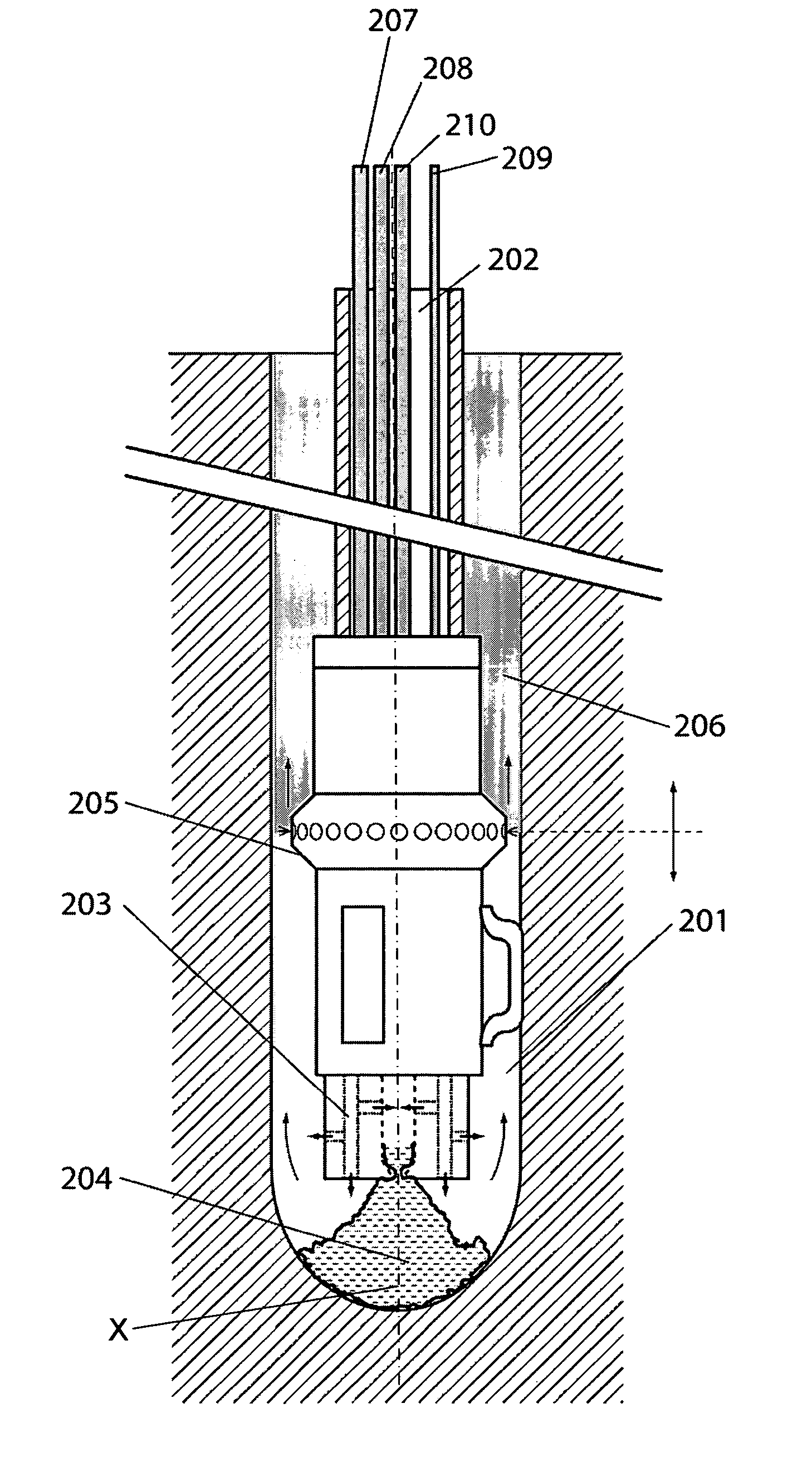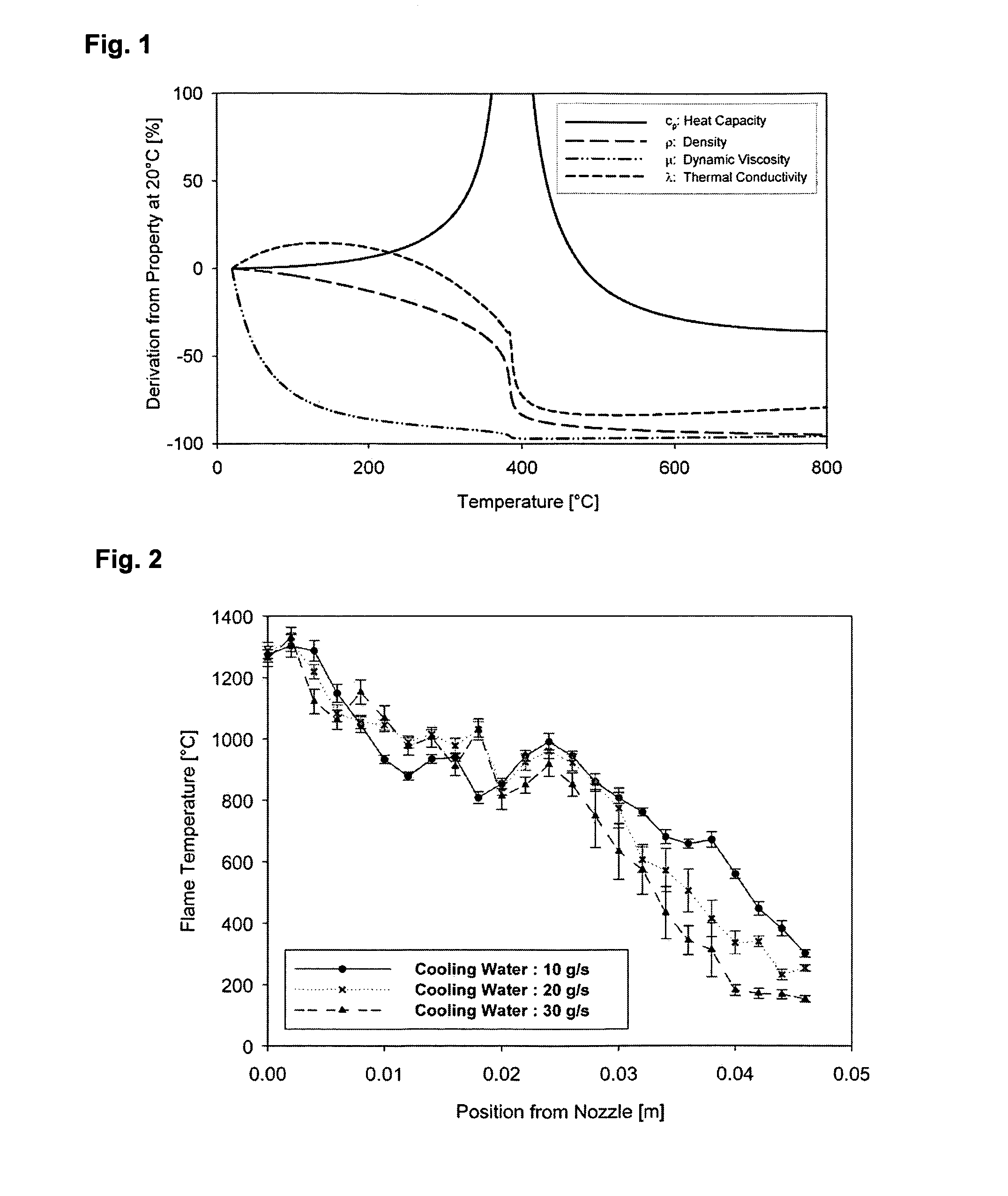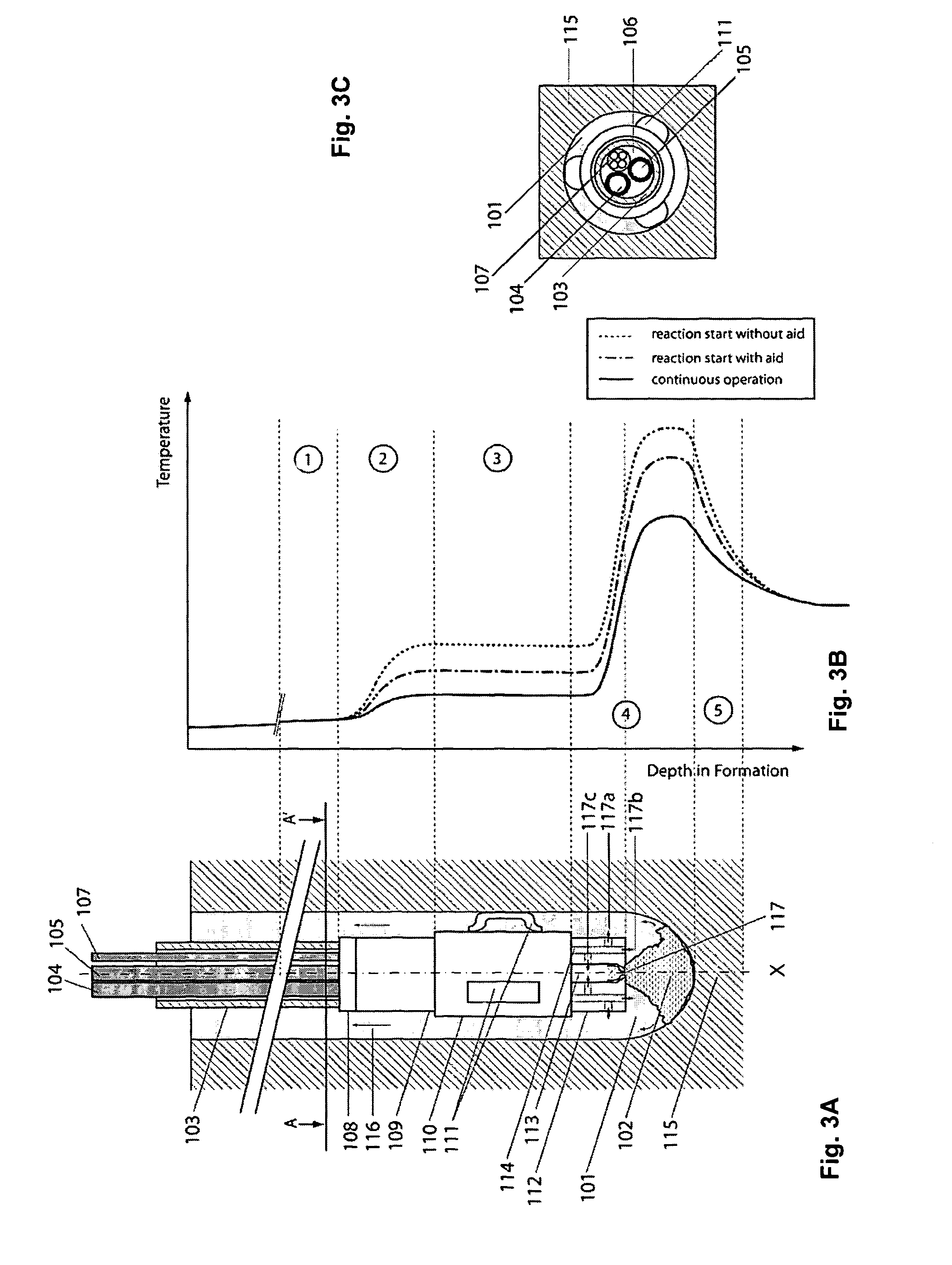Rock drilling in great depths by thermal fragmentation using highly exothermic reactions evolving in the environment of a water-based drilling fluid
a technology of exothermic reactions and rock drilling, which is applied in the direction of earth drilling and mining, dislodging machines, drilling machines and methods, etc., can solve the problems of significant downtime of the drilling rig, constant mechanical friction of the drill bit of the conventional rotary drilling rig, and uneconomical drilling in great depth. , to achieve the effect of reducing energy and thermal spallation efficiency, reducing the density, and improving the reaction conditions
- Summary
- Abstract
- Description
- Claims
- Application Information
AI Technical Summary
Benefits of technology
Problems solved by technology
Method used
Image
Examples
first embodiment
[0129]FIG. 13: a drilling rig;
second embodiment
[0130]FIG. 14: a drilling rig;
[0131]FIG. 15A: a drilling string element according the second embodiment in FIG. 14;
[0132]FIG. 15B: a cross-section G-G′ of the drilling string element according to FIG. 15A;
third embodiment
[0133]FIG. 16: a drilling rig.
[0134]FIG. 2: Three axial temperature profiles of a continuous hydrothermal diffusion flame burning in water at a pressure of 250 bar are shown. Preheated ethanol is burnt with preheated oxygen in a cylindrical reactor under an oxygen excess ratio of 1.5 using three different cooling water mass flows. The cooling water flows in an annulus between the flame and the reactor walls and therefore is in direct contact with the hot reaction zone. The length of the flame in all experiments is about 25 mm. It can be clearly seen that temperatures dramatically drop outside the flame zone due to the cooling effect of the subcritical surrounding cooling water. The higher the mass flow of cooling water the steeper the temperature drop in the burnt products zone.
[0135]The fast cooling of the burnt products shows that the desired high temperatures and heat fluxes to induce rock failure can be achieved better by moving the reaction zone of the flame as close as possibl...
PUM
 Login to View More
Login to View More Abstract
Description
Claims
Application Information
 Login to View More
Login to View More - R&D
- Intellectual Property
- Life Sciences
- Materials
- Tech Scout
- Unparalleled Data Quality
- Higher Quality Content
- 60% Fewer Hallucinations
Browse by: Latest US Patents, China's latest patents, Technical Efficacy Thesaurus, Application Domain, Technology Topic, Popular Technical Reports.
© 2025 PatSnap. All rights reserved.Legal|Privacy policy|Modern Slavery Act Transparency Statement|Sitemap|About US| Contact US: help@patsnap.com



